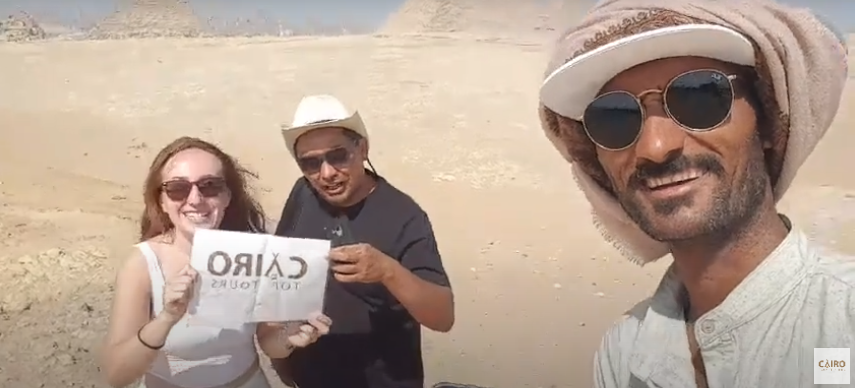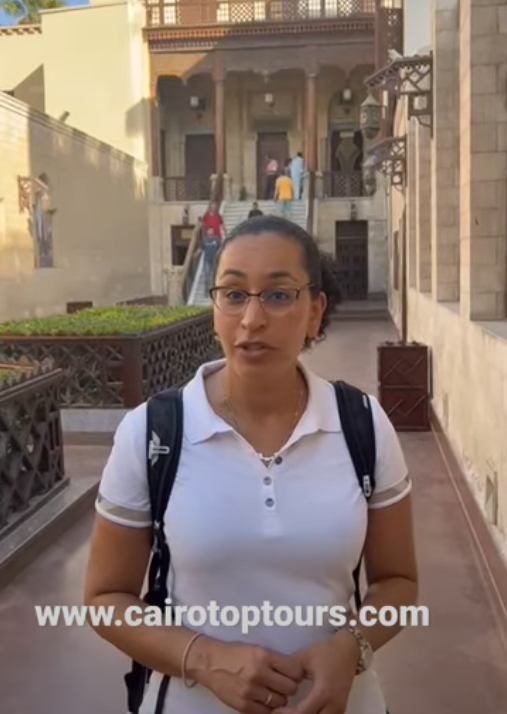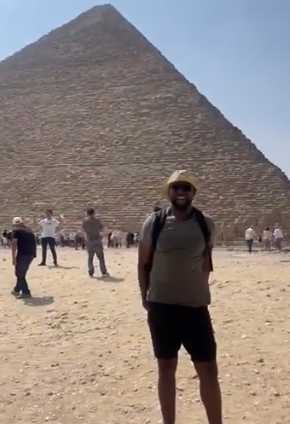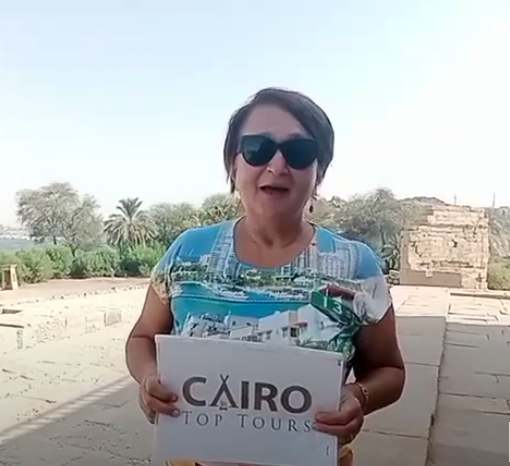10-day Egypt Itinerary: Nile Cruise and Desert Safari Tour
Overview
Wonderful Egypt Itinerary: Nile Cruise and Desert Safari Tour
On a thrilling nine-night, 10-day adventure through Egypt with our exclusive Egypt travel packages. Explore the iconic landmarks of Cairo and Giza, delve into the wonders of the Egypt desert on a safari tour to Fayoum Oasis, and set sail on a luxurious 4-night Nile cruise to discover the treasures of Luxor and Aswan. Accompanied by a knowledgeable Egyptologist tour guide, you'll travel in comfort and style aboard a private air-conditioned vehicle. Immerse yourself in the mystery and beauty of this breathtaking landscape with our carefully crafted Egypt itinerary tours.
Wonderful Egypt Itinerary: Nile Cruise and Desert Safari Tour
On a thrilling nine-night, 10-day adventure through Egypt with our exclusive Egypt travel packages. Explore the iconic landmarks of Cairo and Giza, delve into the wonders of the Egypt desert on a safari tour to Fayoum Oasis, and set sail on a luxurious 4-night Nile cruise to discover the treasures of Luxor and Aswan. Accompanied by a knowledgeable Egyptologist tour guide, you'll travel in comfort and style aboard a private air-conditioned vehicle. Immerse yourself in the mystery and beauty of this breathtaking landscape with our carefully crafted Egypt itinerary tours.
Inclusion
Airport meet-and-greet service in Cairo.
6 days of accommodation at Cairo Pyramids Hotel.
4 days of accommodation on a 5-star Nile cruise.
Domestic Tickets from (Cairo – Luxor).
Tickets for domestic flights from Luxor to Cairo.
a personal tour guide for the duration of your trip.
Every transport will take place in a personal AC car.
All of the locations on the itinerary have admission fees.
meals that are specified in the trip schedule.
all fees and taxes.
Exclusion
Airfare for international travel.
Entrance visa for Egypt.
Tipping.
Nothing else has been mentioned so far.
Itinerary
Upon your arrival at Cairo Airport, a representative from cairo top Tours will assist you with your luggage and guide you through all passport check processes. Subsequently, a private air-conditioned car will transport you to the 5-star hotel you've reserved, allowing you to check in and relax for the evening.
On the second day, following a delightful breakfast, your tour guide will accompany you to explore the pinnacle of ancient Egyptian culture and visit some of Egypt's most renowned tourist destinations, including:
The Egyptian Pyramids at Giza:
The Giza pyramid complex, standing for over 4,000 years, epitomizes ancient Egypt's grandeur. It comprises the Great Sphinx, The Valley of Temple, and six smaller pyramids alongside the three main pyramids.
The Great Pyramid:
Constructed around 2580 BC, the Great Pyramid stands as the only surviving structure from the original Seven Wonders of the Ancient World. Built with 2.3 million limestone blocks, each weighing 2.5 tons, and employing approximately 100,000 skilled laborers over 20 years, it held the title of the world's tallest structure for 3,800 years until surpassed by England's Lincoln Cathedral in 1311. Visitors are still captivated by its intricate interior design and enigmatic origins.
The great Sphinx of Giza: Known as Abu al-Hawl in Arabic, meaning "The Father of Terror," the Great Sphinx replaced its original name of "Hor-Em-Akhet," translating to "Horus of the Horizon." Depicting a mythical creature with a lion's body and a human head, it's believed to symbolize King Khafre's strength and intelligence. Carved from a single massive limestone block, it stands 73 meters (240 feet) tall and 19 meters (60 feet) wide.
The Valley Temple:
Dating back to the Old Kingdom of Egypt (2686-2134 BC), The Valley of Temple was part of the complex where mummification rituals occurred. This well-preserved archaeological site provides valuable insights into ancient Egyptian burial practices and mummification techniques.
After a delightful lunch at a café overlooking the pyramids, your tour guide will lead you on an enchanting exploration, including:
A visit to the Egyptian Museum to delve deeper into the country's rich history.
Exploring Cairo's Old City, where you'll discover Khan El Khalili, a bustling bazaar filled with souvenir shops, cafes, and shisha bars.
After breakfast, your tour guide will pick you up from your hotel to explore some of the most captivating sites in ancient Cairo, including:
The Hanging Church: Also known as The Virgin Mary's Holy Church, the Hanging Church holds a significant place in Cairo's Coptic heritage. Dating back to the fifth century AD, it is one of Egypt's oldest and most renowned churches, serving as the residence of the Coptic patriarch. Situated on the southern wall of the Roman fortress Babylon, the church is adorned with architectural elements from the seventh to twelfth centuries, standing 30 feet tall and boasting breathtaking interior and exterior design.
Mosque of Amr Ibn Al Aas: Constructed in 641 AD, the Mosque of Amr Ibn Al Aas holds great importance as one of Egypt's earliest and most prominent Islamic landmarks. It marks the beginning of Egypt's Islamic history and continues to serve as a place of worship. Over the centuries, the mosque has undergone several renovations, showcasing the evolution of Islamic architectural styles.
The Ben Ezra Synagogue: Dating back to the 19th century, the Ben Ezra Synagogue is a remarkable tourist destination with a rich history. Originally serving as a church until 882 AD, it was later converted into a synagogue. Despite its age, the synagogue remains well-preserved, adorned with exquisite Jewish patterns and decorations that date back to the 1950s.
Khan El Khalili Market: Established around 970 AD, the Khan El Khalili Bazaar stands as a vibrant representation of ancient Cairo's bustling market scene. Often referred to as the "Golden Brick Road" of the Middle East, it offers an array of shops, cafes, and traditional eateries, exuding the charm of early Islamic civilization. Adorned with magnificent Islamic architecture and ornamentation, the market provides an immersive cultural experience. Following a pit stop for lunch at a nearby eatery, we'll transport you to a luxurious five-star hotel in Cairo for an overnight stay.
After breakfast, your tour guide will pick you up from your Cairo hotel and escort you to the airport for a direct flight to Luxor, where you'll embark on a Nile cruise adventure. Your first stop will be the Temple of Karnak, also known as Ipet-isu (The Most Selected of Places) and later Pr-Imn (House of Amon). This temple complex served as the focal point of ancient Egyptian religion for over 1500 years, dedicated to various gods including Osiris, Ptah, and Isis, with the Theban triad comprising Amun, Mut, and Khonsu as its primary focus.
After lunch, you'll return to the Nile Cruise and spend the afternoon and evening exploring, with a visit to Luxor Temple. Known as Ipetresyet (Southern Sanctuary), this temple was constructed during the reign of Pharaoh Amenhotep III around 1400 BCE. The temple, dedicated to the god Amun, boasts stunning pillars and intricate decorations, which are especially captivating when illuminated by the moonlight. Following your exploration, you'll return to your cruise ship to spend the night.
After breakfast on the boat, follow your tour guide to explore some of Luxor's most breathtaking tourist destinations, including:
valley of kings: Serving as the final resting place for Egypt's most esteemed kings and queens from the New Kingdom period (1570-1070 BC), the Valley of the Kings boasts 63 tombs, including those of pharaohs such as Rameses (I, II, III, IV, V, VI, VII, VIII, IX, X), Amenhotep I, Hatshepsut, and Tutankhamun. Designated as a UNESCO World Heritage Site in 1979, Tutankhamun's tomb remains one of the most visited, second only to that of Ramses the Great.
Temple of Hatshepsut: Honoring one of ancient Egypt's most illustrious rulers, Queen Hatshepsut, The Temple of Hatshepsut also known as Djeser-Djeseru—"Holy of Holies"—was constructed in 1479 BC. This magnificent temple, dedicated to Hatshepsut's enduring legacy and the god Amun, showcases breathtaking Classical Architecture and houses some of the most remarkable artifacts and sculptures from ancient Egypt.
The Colossi of memnon: These colossal statues, each weighing 720 tons and crafted from quartzite sandstone, depict Pharaoh Amenhotep III (1386-1350 BC). Originally erected during his reign, the statues were damaged by a powerful earthquake in 27 BC and subsequently restored in 199 AD. The statues gained fame throughout the Greco-Roman world due to the "Vocal Memnon" phenomenon—a natural occurrence where the statues emitted a sound resembling a voice at dawn due to the wind passing through them.
After exploring these incredible sites, you'll return to your Nile Cruise for lunch and spend the remainder of the day on board.
The Kom Ombo Temple, meaning "Golden Hill," was constructed between 205 and 180 BC during the reign of Ptolemy V. Dedicated to Sobek, the crocodile god associated with fertility, and Horus, the falcon sky god revered as the protector of royalty, the temple features two distinct but strikingly similar areas dedicated to each deity.
Another significant temple we'll explore is the Edfu Temple, one of the last temples erected during the Ptolemaic period (237-57 BC) to serve as the primary sanctuary for the sky god Horus. Legend has it that the temple was built on the site where Horus vanquished the evil deity Set in the Osiris Myth. The Edfu Temple's architecture and artwork showcase the grandeur of ancient Egyptian religious beliefs and practices.
Moving on to Aswan, we'll visit some of its most magnificent attractions:
The High Dam: A testament to Egypt's determination and engineering prowess, the High Dam was constructed between 1960 and 1970 in collaboration with the Hydro Project Institute in Moscow. Its purpose is to regulate Nile floods, generate hydroelectric power, and enhance water storage for agricultural purposes.
Unfinished Obelisk: Located at the entrance of the Karnak temple, the Unfinished Obelisk, also known as "Tekhenu" ("to pierce the sky"), was commissioned by Queen Hatshepsut around 1508-1458 BC. Unfortunately, it remains incomplete due to cracks that appeared during its construction, offering insight into ancient obelisk-making techniques.
Temple of Philae: The Temple of Philae is renowned for its association with the myth of Isis and Osiris, in which the god Horus, son of Isis and Osiris, defeats the evil deity Set to restore prosperity and justice. In the 1960s, the temple was relocated to Agilkia Island as part of a UNESCO-led rescue operation.
After lunch, we'll return to the Nile Cruise and continue our journey to Aswan, often referred to as the "city of eternal
After receiving your breakfast boxes, you'll meet your tour guide and depart early to travel southwest of Aswan to visit The temples of Abu Simbel. Also known as the "Temple of Ramesses, Beloved by Amun," this magnificent structure was commissioned by Ramses the Great to guard the southern frontier and has captivated visitors since its construction (1279-1213 BCE).
An extraordinary feature of the temple is the Sun Festival, which occurs annually between February 22 and October 22. During this time, the sun illuminates seated statues of Ramses II, Ptah (the God of Creation), Amun (the Creator God), and Ra (the Solar God). Additionally, there is a smaller temple dedicated to Queen Nefertari, Ramses II's beloved wife. Both temples were relocated as part of a UNESCO-led rescue effort in the 1960s.
Afterward, we'll return you to Aswan, where you can opt to spend the night on a Nile cruise if you wish.
The morning after breakfast, before we pick you up for your return trip to Cairo, please check out of your hotel. Upon arrival in Cairo, you'll meet your tour guide who will escort you to your hotel.
One of our representatives will pick you up from your hotel in Cairo. You'll then travel comfortably in a private van, covering a distance of 105 kilometers southwest of Cairo to reach Fayoum. Upon arrival at the arid Fayoum Oasis, you'll visit Quaroun Lake to observe the diverse bird species. Explore the Fayoum Museum, showcasing sculptures and Roman portraits, providing insights into the ancient city of Karanis. The distance between Cairo and Fayoum is approximately 95 kilometers.
Next, you'll proceed to Wadi Al Rayan Waterfalls. Situated in the western desert, Wadi El Rayan is a natural depression 42 meters below sea level, featuring two lakes that boast Egypt's only waterfalls. Established in 1970 due to an overflow of drainage Wadi Al Ryan Water from Fayoum's farmlands, Wadi Rayan offers opportunities for sandboarding. Enjoy a late lunch at a fine dining establishment before being transferred back to Cairo.
One of our representatives will pick you up from your hotel in Cairo. On the last day of your 10-day cultural tour vacation, enjoy a farewell breakfast before departing for Cairo airport to catch your flight back home. We hope you depart with fond memories of your time in Egypt. If you have any suggestions for rearranging the itinerary to better suit your preferences, please let us know. We are committed to ensuring your satisfaction.
Start from : $0
Check Availability

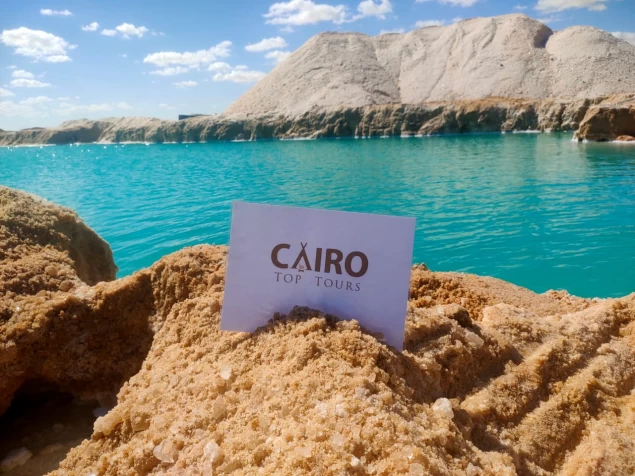
You Also May Like
Looking for something different? check out our related tour now, or simply contact us to tailor made your Egypt tour
2 Days Desert Safari Trip to Bahariya Oasis and the White Desert from Canada
Experience an incredible adventure from Cairo as you explore the Bahariya Oasis and the White Desert, camping in the desert while embarking on an unforgettable safari trip in Egypt. Discover the Black Desert and Crystal Mountain, and immerse yourself in the beauty of nature during this truly amazing experience.
2 Days tour Bahariya Oasis and the White Desert
You will discover the White Desert and the Bahariya Oasis from Cairo. You will camp in the desert during a safari trip in Egypt, before exploring the Black Desert and Crystal Mountain and enjoying nature in this amazing experience
13 Days tour Cairo, Oases and Nile Cruise
Our Egypt travel package is the best option for you to explore our Cairo, Oasis and Nile cruise tour to visit Cairo, explore the highlights of Luxor and Aswan while cruising the Nile River and take a desert safari adventure to the Western Sahara.
7days tour to Siwa Oasis, Bahariya, and White Desert
You will enjoy leave safari visits in Egypt to appreciate the Siwa, Bahariya and White Leave offers that will cover the foremost prominent scenes of common life scenes in Egypt and curiously zones, which you'll never disregard, so you ought to come to them.
Egypt Trips and Middle East Reviews
Egypt Tours has gained a lot of positive reviews from travelers who praise cheap Egypt tours as reflected in our social media accounts, TripAdvisor reviews, and YouTube videos. Customers love traveling through Egypt with expert guides who remain with them throughout their journey, vividly enlivening each site they visit, from Egypt to the Holy Land.
Egypt Tours is now bombarded with glowing comments and praises from travelers who appreciate our economical tours as seen for themselves on our social media pages, TripAdvisor reviews, and YouTube videos. Traveling through Egypt is just perfect for guests who are accompanied by our expert guides bringing history alive at each site visited by the tourist throughout the journey to the Holy Land.
As you can see from our social media accounts, Trip Advisor, and YouTube videos, Egypt Tours has received a lot of positive feedback from customers who love their low-cost tours of Egypt with our experts who accompany them everywhere in Egypt to show them the history of each site they visit during their tours of Egypt and the Holy Land. As you can see from our social media accounts, and YouTube videos, Egypt Day Tour has received a lot of positive feedback from customers who love their low-cost tours of Egypt with our experts who accompany them everywhere in Egypt to show them the history of each site they visit during their tours of Egypt and the Holy Land.
Egypt Tours FAQ
Read top Egypt tours FAQs
Cairo Top Tours' tour operators will customize your tours according to your budget and interests. You shouldn't worry about anything with us because we will take care of all the details of your vacation. That is why we provide a variety of travel alternatives that are affordable while providing an amazing vacation experience. We will work directly with you to ensure that you stay within your budget while enjoying the wonderful experiences. Please contact us immediately to learn more about our budget-friendly travel choices!
Egypt is considered one of the safest countries not only in the Arab world but in the world because Egypt has one of the strongest security services. The Egyptian government is interested in taking all the necessary safety measures to secure tourist trips in Egypt, so you do not have to worry about that at all.
The Egyptian government has announced the wonderful news that tourists from all over the world are waiting for, which is that the opening date of the upcoming Egyptian Museum is approaching. This museum is considered the most famous museum in the world at present because it includes a large collection of rare Pharaonic monuments.
In the case of cancellation of the trip by the customer, based on the start dates of the trip, the following costs will be charged:
15% of the total cost of the trip, with cancellation from the booking date up to 61 days before the start date of the trip
25% of the total cost of the trip, with cancellation from 60 to 31 days before the start date of the trip
35% of the total cost of the trip, with cancellation 30 to 15 days before the start date of the trip
Cairo Top Tours organizes many luxury tours that allow you to stay in the best and most luxurious hotels and cruises in Egypt and the Middle East, such as Dahabiya Nile Cruises, Movenpick Nile Cruises, and Mayfair Nile Cruises, and many other cruises.
Cairo top tours provide high-quality services at reasonable prices. Online, one can find classic tours starting from $700 to $1150. There are also discount coupons for certain destinations and hotels, and last-minute offers or multi-leg flights may lower the overall tour expenses. Booking system errors may even result in flights being available at a cheaper rate. We guarantee the best accommodation at top-rated hotels in various locations, such as Cairo, Luxor, Aswan, the Red Sea, and the Western Desert. During Egypt desert safari trips, we supply top-notch camping equipment.
We have multiple options for you to connect with us conveniently. These options include filling out our check availability forms located in our Egypt excursions and travel packages, contacting us via email, or reaching out through WhatsApp or phone at +201022772955. Our travel agency is located in the Masha'l district of Giza governate and we have representatives in various locations throughout Egypt to assist you during your travels. Furthermore, we have formed partnerships with agencies in Jordan, Dubai, Turkey, and other locations to provide a wide range of services.
All travelers to Egypt must have a valid passport and a travel visa. The visa can be easily purchased at the airport upon arrival. The cost of a 30-day single-entry tourist visa is $25, must be paid in cash (no credit or debit cards are accepted), and the passport must be valid for at least six months beyond the date you plan to leave Egypt. Citizens of all European countries, Australia, Canada, Japan, South Korea, New Zealand, Norway, Russia, Ukraine and the United States can obtain visas upon arrival. (Egypt allows visa-free access to some countries such as Bahrain, Hong Kong, Kuwait, Lebanon, Oman, Saudi Arabia, the United Arab Emirates, and Malaysia.) Visas can also be purchased in advance through Egypt's electronic visa portal, but it is much easier to purchase them at the airport. If your country is not listed above, you must apply for a visa at an Egyptian embassy or consulate in your country.
Booking your dream tour with Cairo Top Tours is a hassle-free and convenient experience. Our website provides personalized pricing options, an easy-to-use booking process, and comprehensive information about all of our tours. If you prefer to speak to one of our experienced tour operators, we have a Reservations Office open from 7:00 a.m. to 3:00 p.m. GMT. You can also contact us via WhatsApp at +2-01022772955. We are committed to making the reservation process as effortless as possible while providing excellent customer service for all inquiries. To enhance your browsing experience, you can limit your search to our website by entering our URL, cairotoptours.com, into your Google search bar. Let us help you create a memorable vacation that you will cherish forever.
At Cairo Top Tours, we take great pleasure in providing our valued clients with a variety of safe and secure payment options. We understand that payment plays a crucial role in the preparation of your trip, and our goal is to ensure that your experience is one of utmost satisfaction. As a result, we offer a wide range of payment methods for you to choose from. You can pay 50% of the total trip amount using one of the following methods, and the remaining balance can be paid in cash or with a POS upon arrival, with an additional commission fee if requested. -In case you select to pay by credit card, our dedicated tour consultant will provide you with a safe payment link, where you can enter your details without any worries. -Bank transfers are also accessible if you book your trip at least 30 days in advance, however the transfer must be completed within two working days of purchase. - You can pay by phone for last-minute bookings, however this option is only available for day trips, half-day excursions, and activities lasting less than one day.
Cairo Top Tours offers a distinguished collection of exciting safaris that will enable you to visit the most famous Egyptian oases and deserts to have the opportunity to relax, meditate, and get away from the hustle and bustle of the city. The most famous Egyptian oases and deserts that you should visit are Siwa Oasis, Dakhla Oasis, Kharga Oasis, Farfara Oasis, Black Desert, White Desert, and Bahariya Oasis.
If you are thinking of spending a special holiday in Egypt, Cairo Top Tours will organize the best program for you and your family. We will help you visit the most important religious shrines where the Holy Family resided during their visits to Egypt, such as the Church of Abu Serga and the Hanging Church.
Egypt is considered one of the safest countries in the world for tourists because, despite the current conflict between Egypt and Israel, which Egypt is trying to stop, Egypt keeps its security and its borders away from this conflict. The Egyptian government takes all necessary security measures to protect tourists, so you do not have to worry about traveling to Egypt anymore.
The Hot Air Balloon Ride is one of the best and most enjoyable experiences that you should not miss while you are in Egypt to see the splendor and beauty of the charming city of Luxor. You will be able to see the magnificent temples and stunning landscapes from the sky above Luxor.
When booking tours, including your mobile phone number can improve the entire experience for both you and the tour operator by permitting quick contact and keeping you informed of any trip updates. When making a reservation, remember to specify your country code to guarantee smooth communication. Emails may go unopened during vacations, thus adding your mobile number is critical.
There are a number of troubleshooting procedures you can use to address any problems you may have accessing a link on our website, Cairo Top Tours. Make sure your internet connection is strong before refreshing the page. If that doesn't work, try clearing the cookies and cache in your browser before trying to access the website again. We urge you to get in touch with our customer service team right once if none of these solutions work. Our qualified experts will examine the problem right away and take immediate action to fix it.
The trips offered by Cairo Top Tours are the best in Egypt. The tours we offer you are private and can be organized according to your interests, budget, and schedule.
Tipping is highly subjective, and while the local hosts enjoy any tips they receive, tips are not required, and the level of excellent service is not dependent on the expectation of a good tip. If you were satisfied with the service provided during your tour, a tip for the guide is appropriate but not required. While it may not be customary for you, it is critical for the individuals who will look after you throughout your trip, inspires outstanding loyalty, and is a well-known practice in many nations' tourism industries.
TThere are many wonderful Egyptian coastal cities where you can spend the Easter vacation and make the most beautiful memories with your friends and family. Cairo Top Tours will help you spend a very special holiday through the wonderful programs that we will organize for you in Egypt.
Cairo Top Tours is one of the best and most famous tourism companies in Egypt and in the Middle East because it provides you with a range of services that you will need from the beginning of the trip to its end, such as transportation services, domestic airline tickets, accommodation that includes hotels and cruises, meals, meet and assist services at the Airports, and many other services that will make your trip to Egypt more than wonderful.
Egypt has taken measures to ensure the safety of tourists, and many popular tourist destinations are considered safe to visit. However, it's always a good idea to stay updated on travel advisories and follow local guidelines.
The pyramids are considered supernatural engineering buildings because even though they were built thousands of years ago and were subjected to natural disasters such as earthquakes, floods, and demolition attempts by other peoples who invaded Egypt, they are still standing proudly and steadfastly until our present era.
Egypt is the most beautiful country to spend your Christmas because Egypt has a mild and cool weather throughout the year. The extreme cold will not prevent you from going out, hiking, and exploring this wonderful country. Cairo Top Tours offers you a wide range of Egypt Christmas Tours that will enable you to celebrate the New Year in many charming Egyptian cities.
Yes, generally, Egypt is considered a safe tourist destination, but it's important to take basic precautions and follow the local authorities' guidelines.
The pyramids are considered a scientific and astronomical miracle up to the present time. They are also a mystery that scientists cannot explain, despite the scientific progress and modern theories that they have come up with at the present time. The pyramids are located under the three largest stars in the galaxy. The height of the pyramid from the ground is the same as the distance between the sun and the earth. The weight of the granite stone at the top of the pyramid is 70 tons, and scientists were unable to explain how a stone of this size was placed on top of the pyramid.
The Egyptian civilization is considered one of the oldest and most famous civilizations in the world because the ancient Egyptians excelled in many sciences and were able to discover technologies that fascinate scientists in our current era, such as medicine, pharmacy, and astronomy. The documents left by the ancient Pharaohs about these sciences are still being studied until now.
The most important monuments of Sinai's religious tourism in Sinai, Egypt, known as the Sinai Development, are the information and secrets of the holy place where our master Mossi received the Ten Commandments as mentioned in the Jewish, Christian, and Islamic religions
The viewer from the top of the mountain is able to see beautiful scenes of the surrounding mountain range, especially in the sunrise and sunset periods, located near Mount Catherine (Mount Taur Sinai), where St. Catherine monastery is located, and surrounds the mountain with a range of South Sinai mountain peaks.
Are you ready to visit this holy mountain!
Cairo Top Tours is one of the most famous Egyptian tourism companies whose trips cover all the important Egyptian cities from northern to southern Egypt, including the most famous archaeological cities such as Luxor, Aswan, and Cairo, coastal cities such as Alexandria, Sharm El-Sheikh, and Hurghada, and picturesque Egyptian deserts such as Siwa Oasis and the Dakhla and Kharga Oasis and Farafra.
If any tourist from all over the world wants to visit the Middle East, Egypt is the first country that will come to mind because Egypt enjoys many rare cultural and recreational factors that you will not find in any other country. For example, Egypt enjoys a moderate and pleasant atmosphere throughout the year. Egypt enjoys many picturesque natural landscapes. During your stay in Egypt, you will be able to visit many amazing temples and archaeological sites, and the pyramids are the most famous of these landmarks.
The Red Sea is one of the longest and most beautiful seas in the world and extends over several countries. Tourists come from all over the world to enjoy diving and snorkelling in the crystal clear waters of the Red Sea and to see the rare marine creatures. There are many charming coastal cities overlooking the Red Sea, such as Hurghada, Sharm El Sheikh, and Dahab.
Egypt is one of the most famous and largest countries in the Arab world in the field of tourism because it has a history and civilization that exceeds seven thousand years. Egypt is the land of the great Pharaohs, where you will be able to see two of the most famous Seven Wonders of the World, which are the Great Pyramids of Giza and the Lighthouse of Alexandria. Egypt combines the aspect of its culture and history with the entertainment aspect that you will find in many coastal cities such as Sharm El Sheikh, Hurghada, and Alexandria.
Egypt is considered one of the most famous countries that has many antiquities and monuments in the world, and you can see these famous antiquities in Egyptian museums such as the National Museum of Egyptian Civilization, the Grand Egyptian Museum, and the Egyptian Museum in Tahrir. There are also many other Egyptian antiquities that have been transferred to foreign countries. During the foreign invasion of Egypt, such as the Hall of Egyptian Antiquities and Monuments was located in the Louvre Museum in Paris. Among the most famous artifacts in Egypt are the treasures of King Tutankhamun: King Tutankhamun’s mask made of gold weighing 150 kilograms, his golden throne chair made with unprecedented precision, and the king’s sword made of a stone that does not exist on planet Earth. Scientists explain This is because it was probably made from a meteorite that fell on Egypt in that era.
Just outside of Cairo, Egypt, on the Giza Plateau, is where you can see the Sphinx. It is situated close to the Giza Pyramids.
Egypt includes a number of unique museums and palaces that are gaining wide fame around the world. The most prominent of these museums is the Egyptian Museum in Tahrir, the National Museum of Egyptian Civilization, and the Grand Egyptian Museum, whose opening is eagerly awaited by tourists from all over the world. These museums contain a distinguished collection of dazzling Egyptian monuments that the world still cannot explain how they were manufactured. There are also many other palaces that serve as wonderful museums from different eras, such as the Baron Palace, the Palace of Mrs. Aisha Fahmy, and the Abdeen Palace. These palaces contain a huge collection of artistic artifacts.
Egypt is one of the most beautiful countries in the world because it has many picturesque natural landscapes, which will make you feel that these areas are imaginary, such as the white desert, Cleopatra springs, salt lakes, and the view of the stars in Wadi El Hitan.
There are many famous and beautiful cities that you must visit while you are in Egypt. Cairo, Luxor, and Aswan are three of the most famous archaeological cities that you must visit to learn about Egypt’s history and civilization. If you want to relax and spend a good time on the Egyptian beaches, Hurghada and Sharm El Sheikh are a great choice for you.
Cairo Top Tours is interested in providing many diverse long- and short-term trip programs to suit all types of travelers, their interests, and their budgets. Therefore, you only have to browse the distinguished programs that we offer you on our website.
There are all types of tourism available in Egypt that you could desire, such as medical tourism that you can enjoy in the Bahariya Oasis and Siwa Oasis, cultural and educational tourism in Luxor, Aswan, and Cairo, recreational tourism in Sharm El-Sheikh and Hurghada, safari in Siwa, the White Desert and many other oases.
Egypt is one of the most famous travel destinations in the world and has a civilization exceeding seven thousand years and its history is still being studied in many countries. Egypt has many of the Seven Wonders of the Ancient World, such as the Pyramids, which are internationally famous, not just at the level of the Arab world, and the Lighthouse of Alexandria.
Yes, generally, Egypt provides good healthcare services for tourists. There are many hospitals and specialized clinics in tourist areas. It's always essential to have health insurance to cover any emergencies and to check health requirements before traveling.
The Pharaohs constructed the temples, which you can visit to spend your vacation. One option is to travel to Luxor, a monument-rich city. You can travel to the Red Sea during the summer. Our organization provides a cost-effective way to travel to Egypt.
The word "oasis" originally came from Latin and Ancient Greek, which borrowed it from the Demotic Egyptian language. In a later form of Egyptian called Coptic, the word for oasis is "wahe" or "ouahe," which means a place where people live.
Yes, there are sound and light shows in Karnak Temple in Luxor. These shows are exciting experiences that provide visitors with a glimpse into the history of the site and ancient Egyptian civilization in a fun and impressive way.
These shows usually take place at night and use lighting and sound effects to show archaeological sites and introduce their history and stories. These offers add a special character to visiting the Valley of the Kings, as visitors can enjoy a unique and interactive experience that tells the history of the region in a different way
Luxor and Aswan are renowned for their rich historical and archaeological significance in ancient Egypt. Luxor is often called the "world's greatest open-air museum" due to its numerous temples, tombs, and monuments. Aswan is famous for the High Dam and the Philae Temple.
Seafood is a highlight, given its coastal location. You'll find a variety of international cuisines in the city, including Egyptian, Middle Eastern, and European options.
The Sofitel Winter Palace Luxor, Pavillon Winter Luxor, and Spirit Luxor Luxury are a few of the greatest upscale accommodations in Luxor that are close to the Luxor Temple.
Go see the dark and fiery Black Desert and the special White Desert made of a different kind of rock. After that, go for a fun swim in the oasis in the middle of the desert, and it's all included in the tour!
Khan el-Khalili is a very popular market in the old part of Cairo, Egypt. It's a place where people can go shopping and find lots of interesting things to buy.
KV2 is a special place where the body of a pharaoh named Ramesses IV is buried. It is like a big underground house for the pharaoh's body. This tomb was the one we liked the most in the Valley of the Kings. It's included in the main ticket. The hallway is long and has lots of pretty things to look at. Inside the tomb, there are lots of colorful pictures on the walls and ceiling.
Yes, many hotels in Luxor provide services and facilities that suit the needs of families. These hotels often include spacious accommodations, children's entertainment programs, and facilities for families. Here are some hotels that might be suitable for families in Luxor:
El Mesala Hotel
Nefertiti Hotel
Pyramids Luxor Hotel
Sofitel Luxor Luxor Hotel
The idea of an all-powerful god changed during the course of ancient Egyptian history. The sun god Ra was regarded as the most significant divinity in the Old Kingdom. Amun-Ra was identified during the New Kingdom with the concept of an all-powerful creator god. It's crucial to remember, though, that polytheistic ancient Egyptian religion placed a strong emphasis on the worship of several gods and goddesses.
Yes, you can visit some of Luxor's temples in the evening to see these historic places in a different atmosphere. Particularly the Luxor Temple is well-known for its captivating light and sound spectacle that happens after sundown. An engrossing environment is produced by the lit structures and told stories. When you visit the temples, it's a good idea to inquire about the precise times and whether night visits are available.
Yes, Egypt Classic Tours includes visits to famous historical sites. Tours are designed to include many of Egypt's notable historical attractions and places, such as the Pyramids in Giza, Karnak Temple in Luxor, Philae Temple in Aswan, Valley of the Kings in Luxor, and more.
Destinations are carefully selected to ensure a comprehensive and enjoyable experience for visitors, with opportunities to explore Egypt's rich culture and history.
For locations like Jerash, Petra, and Wadi Rum, where local narrative and knowledge add significance, depth, and even friendship to your experience, think about hiring a guide. You can enjoy Jordanian hospitality, learn from the people who know the country best, and support the local economy by spending time with local guides.
Cairo, the vibrant capital of Egypt, offers a wide range of excellent hotels to suit different preferences and budgets. Here is a list of some of the best hotels in Cairo:
Four Seasons Hotel Cairo at Nile Plaza: This luxury hotel offers stunning Nile River views, spacious rooms, world-class amenities, and multiple dining options.
Kempinski Nile Hotel Cairo: Situated on the banks of the Nile, this five-star hotel boasts elegant rooms, a rooftop pool, a relaxing spa, and several dining outlets.
The Nile Ritz-Carlton: Located in the heart of downtown Cairo, this iconic hotel offers luxurious accommodation, a rooftop bar with panoramic views, and direct access to the Egyptian Museum.
Marriott Mena House, Cairo: Situated near the Pyramids of Giza, this historic hotel offers a unique blend of modern comfort and traditional charm, along with stunning views of the pyramids.
InterContinental Cairo Semiramis: Overlooking the Nile River, this upscale hotel features well-appointed rooms, a rooftop pool, multiple restaurants, and a casino.
ONLY THE MAIN ONES IN EACH DYNASTY WILL BE DESCRIBED, AS THERE WERE AT LEAST 7 FEMALE PHARAOHS (CALLED QUEENS) AND 163 MALE PHARAOHS (CALLED KINGS) DURING THE 3,000 YEARS.
Wheelchair accessibility is not available for the excavations and opened chambers within the pyramids, however these are nonetheless accessible to physically fit travelers. Wheelchair users can only see the exterior of the pyramids, but they can still get a good idea of Khufu and Khafre via the streets and certain wheelchair-accessible pathways.
The winter months of November through February are the ideal times to visit Luxor because of the pleasant, moderate weather that makes them ideal for sightseeing and outdoor sports. Summertime temperatures in June, July, and August can reach over 40°C (104°F), making them exceptionally hot. It's crucial to wear sunscreen, drink plenty of water, and schedule your activities appropriately. Both the spring (March to May) and fall (September to October) have comfortable temperatures.
Secluded and close to Egypt's border with Libya, the Siwa Oasis is situated in the Western Desert. Notable features include its ageless history, distinct culture, and breathtaking natural beauty. Sand dunes, salt lakes, and palm groves surround the oasis, which provides guests with a serene and picturesque haven.
Families may find Egypt Classic Tours appropriate. Numerous travel companies provide family-friendly itineraries and age-appropriate activities. The tours frequently feature interactive activities, educational components, and flexible itineraries to meet the needs of families taking trips with kids. It is a good idea to confirm with the tour operator that the itinerary meets the needs of your family.
Sharm El Sheikh is one of the largest and most famous tourist cities in Egypt. It is located on the Red Sea coast at the confluence of the Suez Canal and the Gulf of Aqaba. It is the largest city in the South Sinai Governorate with an area of 480 square kilometers. It is characterized by a desert climate, as it does not experience much rainfall, and the average temperature in winter reaches 23 degrees Celsius.
This romantic retreat offers leisurely moments, cultural explorations, and breathtaking natural encounters. Couples can visit historic locations like the remains of Karanis, explore the well-known natural areas of Fayoum like Lake Qarun and Wadi El Rayan, and spend a romantic evening in a quaint eco-lodge or a desert tent beneath the stars.
Cairo Top Tours Partners
Check out our partners
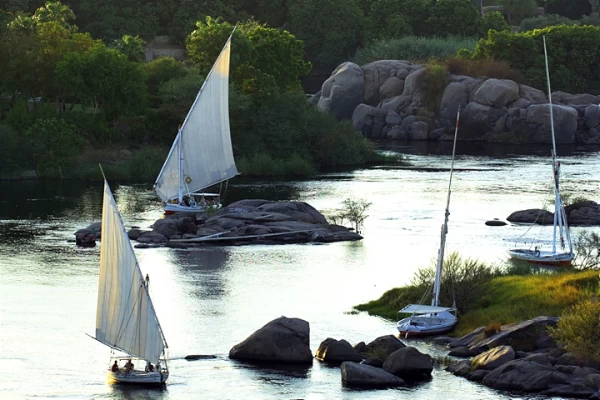
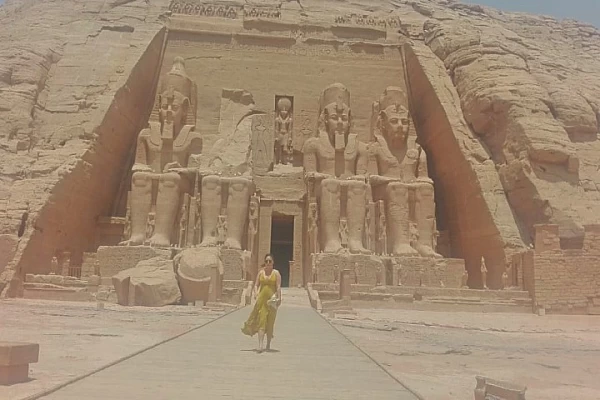
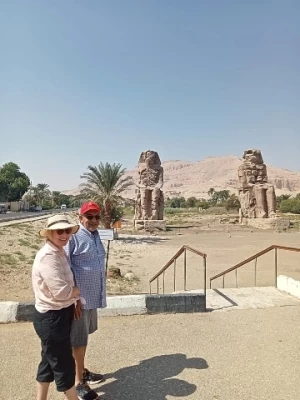
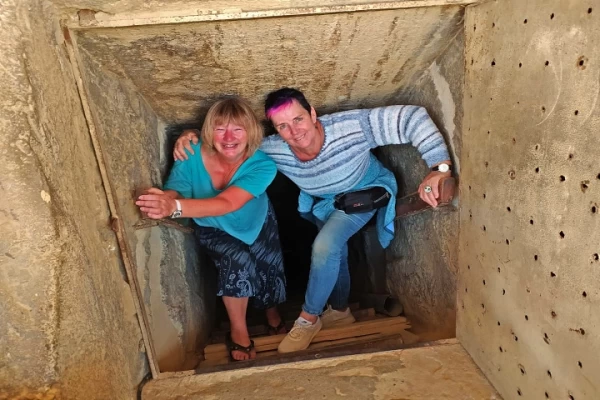
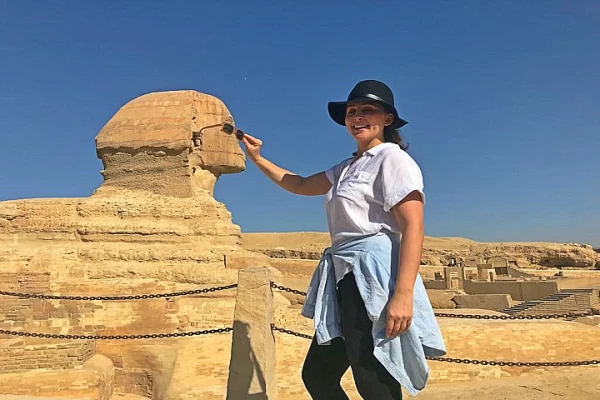
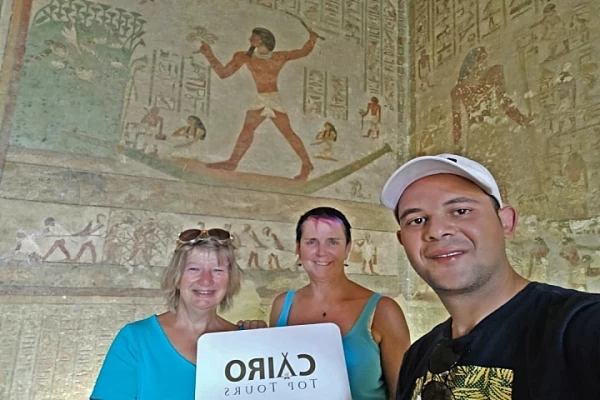
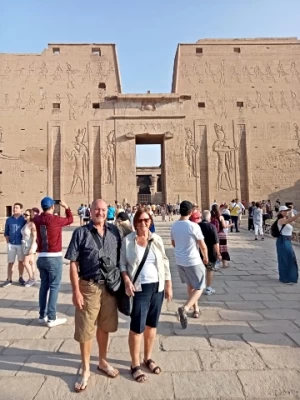

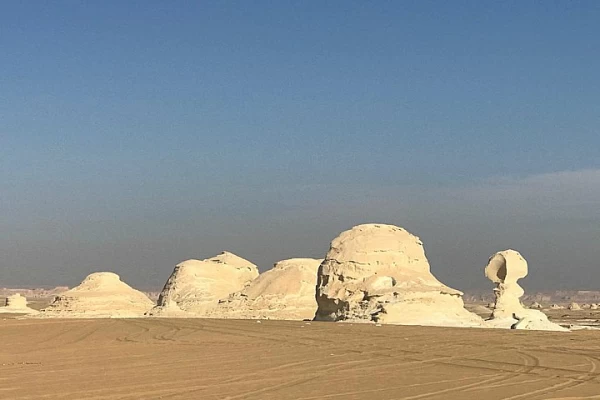
-webp.webp)
-webp.webp)
-webp.webp)

